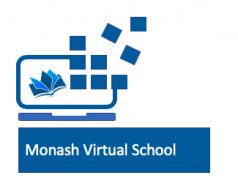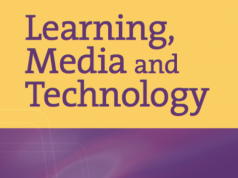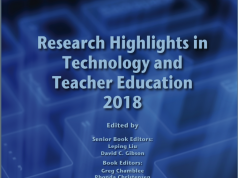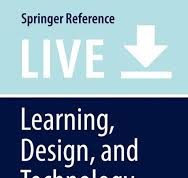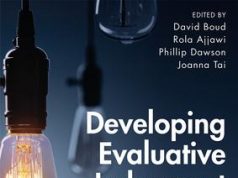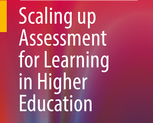- Project Overview
- Affordances for language learning
- Selected Publications
- Self Efficacy Beliefs and Virtual Worlds
Project Overview
Virtual worlds such as Second Life are particularly well suited for teaching and learning second languages. Students can immerse themselves in linguistically appropriate environments (e.g. Chinese restaurant with Mandarin signs, menus, etc), adopt roles and even identities that can provide a rich affective and cognitive model for language performance, as well as interact and collaborate with others to achieve complex goals through pedagogically appropriate media such as text, voice and video. Second Life is able to support competency-based training in areas such as vocabulary and grammar like other computer-assisted language learning tools do, and in addition can also facilitate synchronous interaction between teachers, students and others, including native speakers, in rich, creative ways.
In this project we explore the implications of using virtual worlds for second language acquisition.
Project Members
- Michael Henderson (Monash University)
- Hui Huang (Monash University)
- Scott Grant (Monash University)
- Lyn Henderson (James Cook University)
Project status: Current
Affordances of virtual worlds for language learning
The following is an excerpt of from one of our articles dealing with virtual world affordances for language learning. Please access the full paper at: https://doi.org/10.14742/ajet.842
A synthesis of the research literature spanning virtual worlds and language learning coupled with the authors’ experiences in teaching within virtual worlds identified eight key affordances.
| Affective filter | It is proposed that virtual presence can result in reduced apprehension and embarrassment that otherwise can impede experimentation such as through role-playing. Sanchez (1996) notes this in relation to text-based virtual worlds, and it is supported by Schwienhorst (2002) in relation to graphically rich environments*. Moreover, Schwienhorst points out that role-play in this context “should not be misunderstood as role-playing as in ‘at the train station’ scenarios in some language classrooms but in the more fundamental sense of using alternative personas to approach potentially construct-altering situations” (p. 202). In face to face classroom environments, student language learning outcomes can suffer from what has been termed “foreign language classroom anxiety” (Backer, 1999; Horwitz, Horwitz & Cope, 1986; Zhao & Lai, 2009), particularly at the output stage (Hauck & Hurd, 2005). This affective filter arises because of learner perception of a threatening environment in the form of negative feedback from classmates or the instructor, prompted by their attempt at producing output in the language being learnt. The use of virtual worlds for language learning has been shown to reduce such anxiety (Access to Virtual and Action Learning Live ONline, 2010; Hundsberger, 2009; Peterson, 2011; Rankin, McNeal, Shute & Gooch, 2008). |
| Persistent environments and records | Virtual worlds are persistent – that is, the environment (e.g. Chinese restaurant) and the objects (e.g. Chinese menu) do not disappear at the end of the lesson, unless programmed to do so. This is also true of records of activity, including transcripts of text-based dialogue. Consequently, users can return to the place of their learning, interact with the objects and, depending on the instructional design, peruse records of the event (Bell, 2008). Schwienhorst (2002) argues that persistent records of interaction allow students to “critically examine their own performance, or rather, the performance of their virtual selves” (p. 202). This is further supported by Thorne (2008), who found that lingering utterances (on-screen or recalled via ‘chat history’) facilitated language learning and were also particularly valuable for use to provide individual learners with crucial feedback on their language performance. |
| Physical and linguistic co-presence | The immersive social environment of virtual worlds provides a range of discourse elements that are generally not available in less immersive environments. For example, indexical language (here, this, etc) is often problematic in teleconferencing or other computer-mediated communications (Schwienhorst, 2002). Hence, the value of virtual worlds is that it merges the physical co-presence and linguistic co-presence of the interlocutors (Schwienhorst, 2002). Both types of co-presence are important elements in discourse, and facilitate learning through the negotiation of mutual knowledge (Clark & Marshall, 1981). In addition, Dalgarno and Lee (2010) maintain that co-presence allows learners to “engage simultaneously in shared tasks and/or produce joint artefacts by operating on the same objects in real time”, which can “pave the way for rich and truly collaborative experiences that foster positive interdependence within a learning group” (p. 22). |
| Avatar control and learner autonomy | Students control their avatars to explore and interact, independent of the instructor. While this autonomy is limited by software and environmental design, it does afford student-centred learning. At the simplest level, students can form (or be directed to form) groups and collaborate in similar ways to classroom interactions. Unlike typical discussion forum or text chat learning environments, students can dynamically create and reshape groups according to pedagogical imperatives or interpersonal and social dynamics. Schwienhorst (2002) points out that the affordance of learner autonomy in supporting experimental, learner-centred environments can raise language and linguistic awareness and performability as well as support complex thinking and critical reflection. Collentine (2011) confirmed that there is a positive correlation between learner autonomy in 3D virtual environments and the linguistic complexity and accuracy of learner production. |
| The value of text interactions, even in a virtual world experience | It is proposed that virtual worlds such as Second Life can provide a contextually rich environment (e.g. with graphics, animation, audio and text stimuli) that can serve as powerful cognitive aids to text-based interactions. Simply because Second Life can support voice does not mean that it is always the most appropriate medium for the learning outcomes being targeted. Indeed, the research literature from language education in general and computer-mediated language education in particular reveals that writing not only improves written language skills, but also facilitates orality as well as linguistic and metalinguistic awareness (Beauvois, 1998; Chun & Plass, 2000; O’Rourke, 2005; Schwienhorst, 2002; Sykes, 2005; Thorne, 2008; Wells, 1981). Ma’s (1996) research in text-based virtual worlds also revealed a greater level of self-disclosure, egalitarianism and intercultural awareness than found in face to face exchanges between East Asian and North American college students. For students learning character-based languages like Chinese, text-based interactions also provide the opportunity to consolidate knowledge of Hanyu pinyin romanisation and character recognition (Grant & Clerehan, 2011). |
| Mediated environment | Virtual worlds have the advantages of other simulations in that information can be included and excluded as needed. The virtual world acts as a mediator of the sometimes overwhelmingly rich linguistic and cultural information that can be found in real life experiences. Aspects of that rich information can be decreased, omitted, enhanced, synthesised or otherwise changed to reduce learner cognitive load, heighten awareness and facilitate processing. However, extra information could also be included in new ways to enable learners to interrogate the environment and objects within it in ways that address their learning styles (e.g. auditory, kinetic, etc), preferences and other needs. For instance, street signs in a virtual environment can be clicked to reveal the pronunciation of the name of a road written in Chinese characters, unlike real life signs that remain mute. Flight announcements in a virtual airport can be linguistically authentic and simultaneously targeted in their content so as to meet the specific needs and levels of the task and learners. Careful design of the immersive social environment can reduce the need for the layer of abstract thinking required in textbook-based and other formal learning situations (Carr, 1995). |
| Context-sensitive interactions | Virtual worlds can interact in contextually appropriate ways with learners. For instance, learners can be greeted by a ‘bot’ whenever they enter a room (location context), but that greeting can also be sensitive to an endless number of variables such as the time of day, the gender of the learner (or his/her avatar), the formality of context (e.g. the bot as teacher versus the bot as shop assistant) and the frequency of visits. An example of the implications for language learning is that context-specific variations in language can be vicariously experienced through the avatar. Soundscapes also provide additional environmental scaffolding to learners by giving auditory clues about things such as a location that is important to the completion of a task, or simply provide greater fidelity in experience. Dalgarno and Lee (2010) further argue that virtual worlds “can be used to facilitate learning tasks that lead to improved transfer of knowledge and skills to real situations through contextualisation of learning” (p. 21). |
| Body language | A lack of non-verbal clues, including body language, gestures and facial expressions, has been cited in studies on computer-mediated communication as negatively impacting communication (Hundsberger, 2009; Ramzan & Ritsuko, 1998). In language acquisition, body language enhances communication by adding layers of meaning to what is spoken, which can aid comprehension as well as afford opportunities to explore mannerisms and gestures intimately linked with the target language and cultural practices (Allen, 1999; Shi & Fan, 2010). As virtual worlds increasingly become more graphically rich and the representation of avatars becomes more lifelike (including movement such as facial expressions and gestures), the affordance of body language becomes increasingly powerful. Virtual worlds offer the opportunity for students to not only perform linguistically, but to also ‘act’ in culturally appropriate ways within the assumed roles in the virtual environment (Grant & Huang, 2012). |
* Note: Schwienhorst (2002) used the term ‘virtual reality’ (VR). However, his definition is closely aligned with the term ‘virtual worlds’, which became increasingly popular after 2002. Schweinhorst’s descriptions of the functionality and affordances of VR are consistent with that of Second Life.
Please cite as:
Henderson, M., Huang, H., Grant, S. & Henderson, L. (2012). The impact of Chinese language lessons in a virtual world on university students’ self-efficacy beliefs. In M. J. W. Lee, B. Dalgarno & H. Farley (Eds), Virtual worlds in tertiary education: An Australasian perspective. Australasian Journal of Educational Technology, 28(Special issue, 3), 400-419. https://doi.org/10.14742/ajet.842
Selected Publications
Henderson, M., Henderson, L., Grant, S., & Huang, H. (2018). Cognitive Engagement in Virtual Worlds Language Learning. In S. Gregory., D. Wood. (Eds.), Authentic Virtual World Education Facilitating Cultural Engagement and Creativity. Singapore: Springer. https://doi.org/10.1007/978-981-10-6382-4
Grant, S. & Huang, H. (2012). Learning a second language in Second Life. In J. Peterson, O. Lee, T. Islam & M. Piscioneri (Eds), Effectively implementing information communication technology in higher education in the Asia-Pacific region. Hauppauge, NY: Nova.
Henderson, M., Huang, H., Grant, S. & Henderson, L. (2009). Language acquisition in Second Life: Improving self-efficacy beliefs. In Same places, different spaces. Proceedings ascilite Auckland 2009 (pp. 464-474). Auckland: The University of Auckland and Auckland University of Technology. http://www.ascilite.org.au/conferences/auckland09/procs/henderson.pdf
Henderson, M., Huang, H., Grant, S. & Henderson, L. (2012). The impact of Chinese language lessons in a virtual world on university students’ self-efficacy beliefs. In M. J. W. Lee, B. Dalgarno & H. Farley (Eds), Virtual worlds in tertiary education: An Australasian perspective. Australasian Journal of Educational Technology, 28(Special issue, 3), 400-419. https://doi.org/10.14742/ajet.842
Henderson, L., Henderson, M., Grant, S., Huang, H. (2010). What are users thinking in a virtual world lesson? Using stimulated recall interviews to report student cognition, and its triggers. Journal of Virtual Worlds Research, 3(1), pp. 1-20. http://journals.tdl.org/jvwr/index.php/jvwr/article/viewArticle/823
Henderson, L., Grant, S. J., Henderson, M., Huang, H. (2010).University students’ cognitive engagement while learning in a Virtual World. Proceedings of the Australian Computers in Education Conference 2010. Melbourne: Australian Council for Computers in Education.
Self Efficacy Beliefs and Virtual Worlds
The following are conclusions from one of our articles dealing with self-efficacy beleifs and virtual world. Please access the full paper at: https://doi.org/10.14742/ajet.842
 Measuring performative data, such as student knowledge of Chinese language in a pre- and post-test, can only tell us what the students have learnt. Self-efficacy, on the other hand, has been shown to be a strong predictor of future achievement.
Measuring performative data, such as student knowledge of Chinese language in a pre- and post-test, can only tell us what the students have learnt. Self-efficacy, on the other hand, has been shown to be a strong predictor of future achievement.
Technology: The results revealed that the technological complexity of the Second Life experiences had a negative effect on students’ technological self-efficacy beliefs. This was only ameliorated over time with repeated experiences. While it is not surprising that practice can improve confidence, this does offer instructional designers of virtual world experiences a valuable conclusion: while the use of introductory activities (such as a skills-focused tutorial) to improve technological skills is commonly considered to be essential, it is not sufficient. Instructors need to design for activities relating to technical competency over time, and logically, as an embedded part of the curriculum, thereby facilitating growth of confidence through enactive mastery experience.
Language performance: The impact on self-efficacy beliefs was found to be significantly positive, but it was recognised that more research was needed to better understand this impact’s durability and relationship to issues such as domain specificity and prior experience. A tentative conclusion has been that the Second Life lessons provided students who had limited ‘real life’ experience with valuable enactive mastery experiences comparable in the long term to those acquired by students in ‘real life’. It also appears that the curriculum within the Second Life environment, and not just the environment itself, has a significant impact on student beliefs. This is a valuable finding and may help to dispel some critics’ concerns that these Second Life teaching spaces are more playful than pedagogical.
Please cite as:
Henderson, M., Huang, H., Grant, S. & Henderson, L. (2012). The impact of Chinese language lessons in a virtual world on university students’ self-efficacy beliefs. In M. J. W. Lee, B. Dalgarno & H. Farley (Eds), Virtual worlds in tertiary education: An Australasian perspective. Australasian Journal of Educational Technology, 28(Special issue, 3), 400-419. https://doi.org/10.14742/ajet.842




